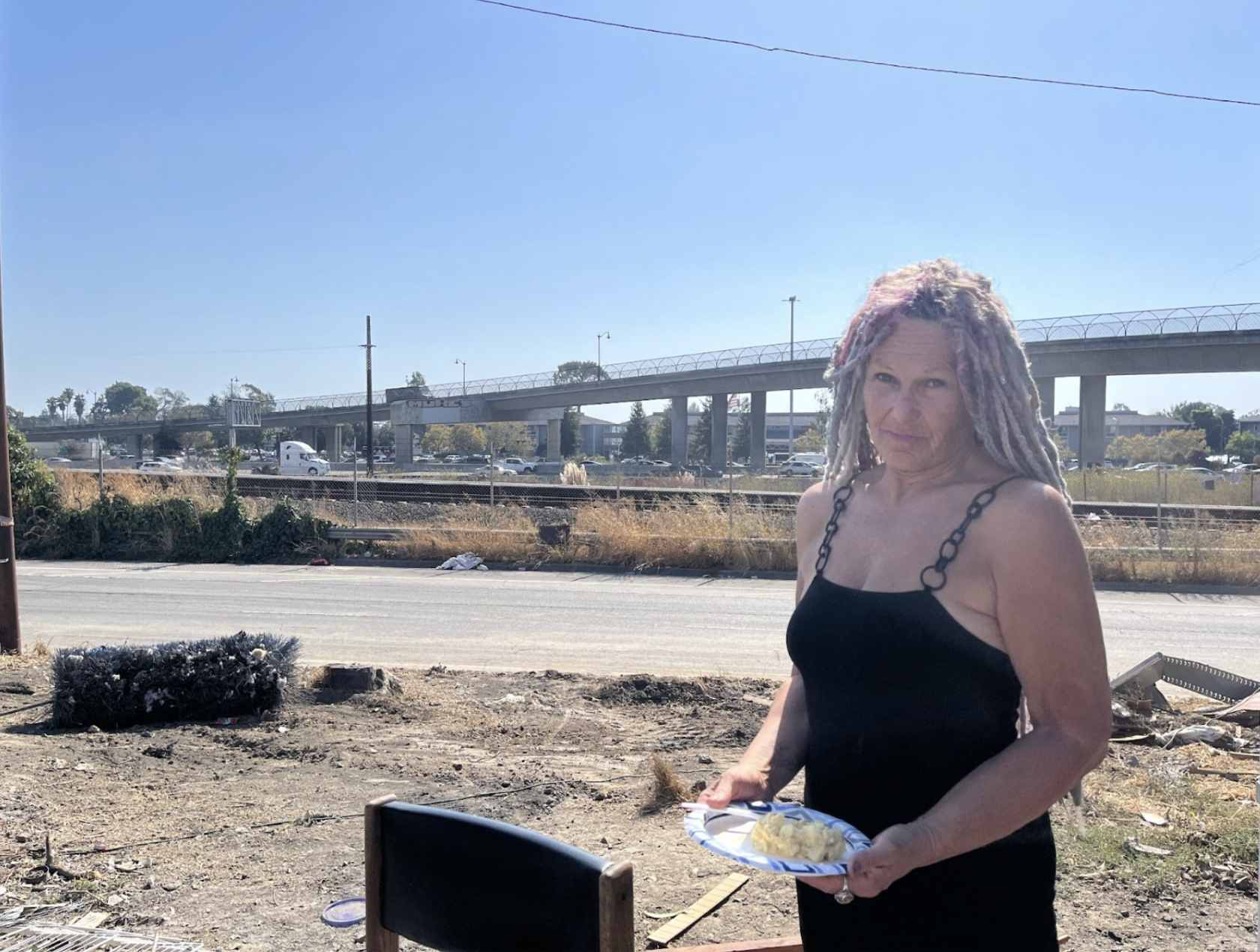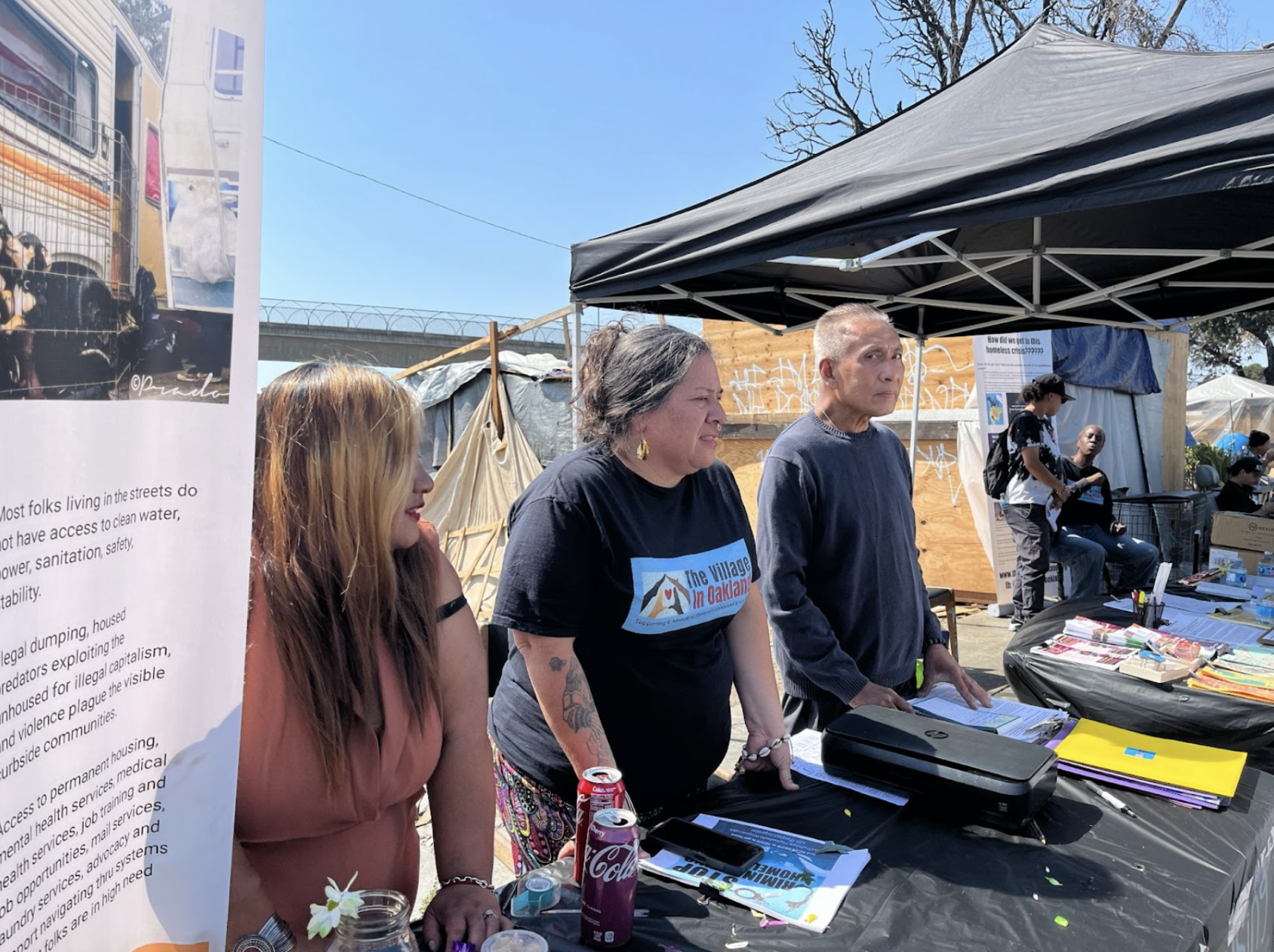No Safe Place to Sleep for Homeless Women in Oakland
Analyzing data to illustrate struggles of unhoused women
Mavin Carter-Griffin has lived on the street in Oakland for 14 years. She used to live in her trailer at the Wood Street encampment, once the largest homeless site in the city before it closed in April. Now she parks her vintage trailer in different neighborhoods, but she is often scared at night because people try to enter her vehicle.
“Men come over here and try to break in,” she said. “They know there is a woman here, and they know that they can get away with it, so they just take advantage of our population and do whatever they want.”

In addition to the other challenges of homelessness, homeless women face a disproportionate risk of sexual violence. A study conducted by the National Library of Medicine found that 56% of homeless women and 14% of homeless men will be raped during their lifetime in the U.S. Though local data are scarce and unreliable, interviews with homeless women and nonprofit organizations suggest these challenges are also acute in Oakland. “Women are easily attacked. Rape and violence against women happened a lot in this encampment, but police never came to investigate,” said Needa Bee, an unhoused activist for The Village, an organization that provides services to the unhoused population.
Tracylee Saelee, 40, lived at an encampment near E. 12th Median for eight years but recently moved into transitional housing. She said homeless women are more vulnerable and more easily targeted.
“One time I woke up, there was some stranger undressed in front of me. I told him not to do that and I was not comfortable,” she said.

There are generally more services for unhoused men because they comprise a greater share of the total unhoused population, making it harder for women to find shelters and services, said Elizabeth Bowen, associate professor at the University at Buffalo School of Social Work.
Shelters and transitional housing for women are insufficient compared to those for men nationally, according to the U.S. Department of Housing and Urban Development’s data.
Point-in-Time data show that the number of unsheltered homelessness rose by 5% among women in 2023 nationally. The number of homeless women who found shelter dropped sharply both nationally and locally.
According to Point-in-Time count data, the number of homeless women in California doubled from 2021 to 2022, and sheltered homelessness among women dropped by 46% from 2021 to 2022. This means that there are more homeless women on the street.
Oakland city officials did not respond to questions about the shortage of housing or the number of temporary beds the city offered.
Dilara Yarbrough, associate professor of criminal justice studies at San Francisco State University, said the data may not capture the true scale of homelessness. It is likely that Point-in-Time counts underestimate the number of unsheltered women, she said. Some of the women who participated in her research talked about hiding at night to be safe, making it harder to count them.
Oakland Elizabeth House, which provides transitional housing for women and children, currently has 15 people on their waiting list, the most they’ve ever had. They have 11 beds, and each resident can stay up to 24 months. Executive Director Jackie Yancy said that the list was longer because funds granted during the COVID-19 were gone, and many women had to leave their previous housing program.
Even when shelter options are available, temporary housing is not a good fit for everyone. Shelters have rules that make it difficult for some people to stay, especially if they have pets, partners, or jobs requiring flexibility with curfews.
Carter-Griffin tried living in transitional housing a few times, but she said she could not bear the rules and the waiting process for temporary housing, so she ended up on the street again.
Substance-use issues can also make shelter life challenging. In Oakland Elizabeth House, every resident has to take a drug test before they move in. They are also required to take drug tests during their stay. If the results are positive, they will be asked to leave because drugs are prohibited in the house, according to Yancy.
Bowen and Yarbrough both suggested long-term and permanent affordable housing is the solution to homelessness. However, in Oakland, households that received housing assistance waited about nine years on average for housing, according to HUD’s data.
“It is good to get a paycheck every week and finally have a decent place to get back to,” Saelee said, reflecting on her eight-year wait for housing.